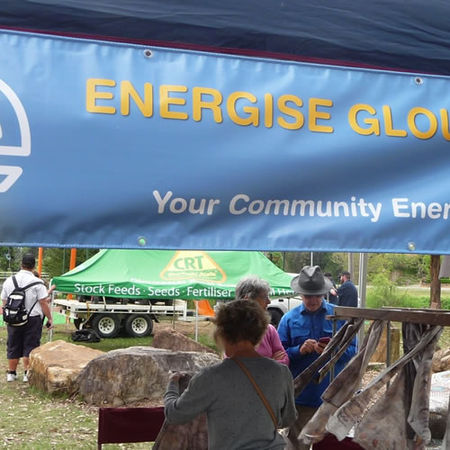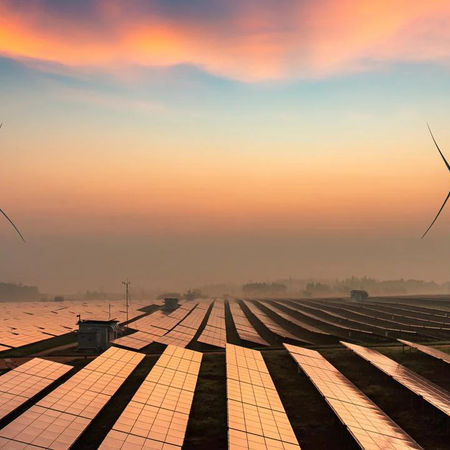
Chairman’s Note
We are one year old; last week we held our first Annual General Meeting (AGM) and in preparation you have received all the Annual Reports. We are at present busy finalising the details and construction of our first project: the installation the PV system on the roof the Bucketts Way Neighbourhood Group. We hope that this will be finished before Christmas.
Our first AGM has completed the formalisation of Energise Gloucester as an Incorporated Association and the following office bearers were elected:
Chairperson: David Marston
Deputy Chair: Cam Laurie
Secretary: Helen Shearer
Treasurer: Jenny Shaw
Committee members: Pat Burrows, Di Montague, Jim DeSilva and Paul Collett
We could not operate without the managers of our operational projects and these are:
Neighbourhood Centre roof PV – John Edwards
Energy efficiency audits – Andrew Coombe
Community electricity generation – Ed Robinson
The Committee is also supported by Pat Burrows as Public Officer, Kerry Marston as Newsletter Editor and Stefanie Pillora to maintain links with other Community Energy groups in Australia.
Yours with energy,
David Marston (Chairperson)
Our first Project Nearing Completion
Our first project is nearing completion and a solar electricity system will soon be operating on the roof of the Neighbourhood Centre. The system will save the Bucketts Way Neighbourhood Group (BWNG) about 80% of their electricity costs in three years time.

A big thank you to all our contributors as we received $22,000 in non-interest loans or donations from members of EG and the Gloucester Community. We will receive a $10,000 grant from electricity retailer PowerShop to fund the project once it is completed.
BWNG will buy the electricity generated by the Photovoltaic Panels which will be owned and operate by Energise Gloucester. In about 3 years they will have paid back the cost of the project and will then own the system themselves and the electricity generated will be free. At this time the community lenders will have their loans repaid.
This is a model that Energise Gloucester is interested in developing for other organisations around the district. It is also similar to other projects being operated by other Community Energy groups around Australia. Some of these projects do pay interest on the money lent by community members and Energise Gloucester is looking at the feasibility of this for other sites around town.
The system on the Neighbourhood Centre contains 120 PV panels on the roof that have a capacity to generate 32.4kW. This means that in the Gloucester roof location the total system will generate nearly 40,000 kW hours of electricity in an average year of sunshine.
The system will not generate all of the electricity used by the Neighbourhood Centre so they will still be purchasing some from the grid when the sun is not shining. This is factored into the calculations and a Smart Meter will allow us to account for purchases of electricity from the grid and sales of excess back to the grid. At this stage there is no battery storage in the system but this can be considered as a further development when better usage data is available after a couple of years.
Energise Gloucester and the BWNG are looking at other projects in 2018 to help people understand and manage their household energy use and costs. The two organisations thank those Community members who have contributed financially to this project and we hope that the model can be repeated elsewhere in the Gloucester district.
People power: how households can help the energy crisis
From an article by Judith Ireland in the SMH 7 Sept 2017
Chris Dunstan, research director at the Institute for Sustainable Futures, based at the University of Technology, says householders don't need to be experts to better control how they consume energy.
Mr Dunstan has started using an app from local company Solar Analytics, which allows him to monitor how much energy his house is creating and how much it is using. This recently warned him his energy generation was dropping off, prompting him to chop off a branch that was shading one of the panels on his roof, and triple his solar output.
It also showed him the best times of day to run big household appliances – like his pool pump – so he can use his own solar-generated supply. It also indicates when to put on the dishwasher or washing machine. "These are reliably simple things," Dunstan says, who adds the changes have not only saved him money, but energy for everyone in the process.
With rising electricity prices and dire predictions about summertime blackouts and brownouts, Australia is understood to be in grip of an energy crisis. But as politicians argue about what to do next, people are quietly making their own difference.
According to energy consultant Hugh Saddler, households account for about 27 per cent of total electricity consumption in Australia. In recent years, despite a rising population and ever-growing passion for gadgetry, there has been a decline in our electricity use. As Dr Saddler notes in a recent report for The Australia Institute, between 2006 and 2016, the quantity of electricity supplied to consumers over the whole year increased by less than two per cent up to 2011, and since then has fallen away to be over nine per cent below the 2006 level.
Dr Saddler says the increasing energy efficiency of household appliances – such as air conditioners and fridges – along with the switch to LED light bulbs, have had a significant impact on our consumption. So it can be worth updating your appliances.
There is also an increasing awareness that energy is something we should actively manage ourselves.
Rising electricity costs are part of this and have changed people's behaviour, says Dr Saddler. But he says people are also making use of advice from government (there are multiple websites about energy efficiency ratings, organising your home and choosing your power company), not-for-profits and industry about how to control their energy use.
The options range from the complex and costly, such as building more energy-efficient homes, to the very basic: unplugging appliances. There are many "low tech" measures that can be applied in a home, including sealing up vents in the walls, installing weather strips around and windows, keeping internal as well as external doors shut on hot days and closing curtains.
In the midst of all this, Australian households are generating their own power with gusto. About 16.5 per cent of Australian households have a solar panel system. According to the Australian Bureau of Statistics, household energy "extraction" increased by 10 per cent from 2013-14 to 2014-15 and is up by 86 per cent between 2002-03 and 2014-15.
Institute of Sustainable Futures research principle Dani Alexer says there is also significant opportunity in mand management, where power suppliers deliberately take steps to shift or reduce demand across the day. "Supply is only one half of the equation," she says. "There are big gains to be had on the demand side."
This could include initiatives like encouraging people to shift their peak usage to different times of the day and could involve autonomous or remote controls for appliances. Ms Alexander uses the example of people coming home and turning on their air conditioners in the early evening of a hot summer's day, which puts enormous pressure on the system. Instead of doing so at 5pm or 6pm, they could begin cooling at 3pm for the evening, so they're not turning it on at the same time as everyone else".
The Australian Energy Regulator wants to encourage power companies to remotely turn down energy-guzzling appliances in exchange for lower power bills. Chief Scientist Alan Finkel's review of the national electricity market also said "more attention should be paid" to how consumers are rewarded for managing their power.
Mr Dunstan says demand management could deliver more capacity than the continuing generation by Liddell power station. In the meantime, he says "there's a whole lot of little things" people can do on their own. "We don't really try very hard," he says of his four-person household. "We don't give up any creature comforts."
Do you know the Answer?

The water STORED in Lake Jindabyne, one of the dams in the Snowy Mountains Scheme, to generate hydroelectric power is an example of:
A: kinetic energy.
B: potential energy.
C: mechanical energy
D: non-renewable energy.
Be the first person to send the correct answer by email to the editor@energisegloucester.org and receive a complimentary coffee at The Fox Den.
The answer to last month's question was B. SOLAR ENERGY INTO ELECTRICAL ENERGY






